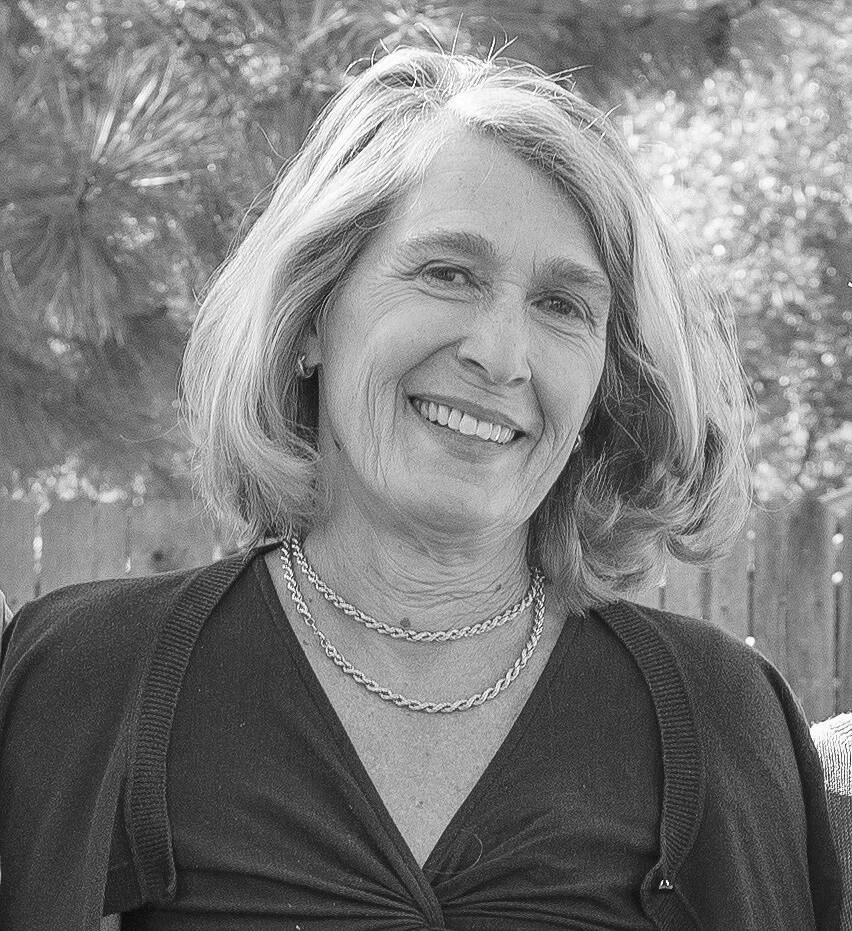Mentors and M&Ms

Editor’s note: In celebration of our 60th year in production, past editors are taking the time, through guest editorials, to help us remember how we got here. The longevity of this “little paper that could” is largely attributed to the dedication and perseverance of townsfolk who care—and continue to care—a whole lot about this town and the importance of its nonprofit community newspaper. Here’s a word from Elizabeth Bassett.
One morning in the early 1990s, my phone rang. It was not a nice man from Nigeria telling me I owed the IRS money.
James Lawrence was on the line. “There’s a situation with The Charlotte News,” James said. “I’m asking all of the newspaper’s contributors to meet at the Congregational Church this afternoon.” He did not wait to hear my excuses. I showed up.
At the time I volunteered for Charlotte Rescue and wrote a monthly column for the paper about all-things-rescue. James lived in Charlotte and was editor for Harrowsmith and EatingWell magazines and for book publisher Chapters, Ltd.
“I got a call from the church,” James told the small gathering. “The Charlotte News operates under the nonprofit umbrella of the Charlotte Congregational Church.” (To read about the history of the paper’s founding, see Nancy Woods’ article in the July 14, 2017, issue of The News or online) “Someone from the Secretary of State’s office alerted the church that the current editor and publisher of The News have applied to take the paper private. They want to own it.”
I knew nothing about the paper’s nonprofit status. I submitted my columns and, like most Charlotters, devoured each issue when it appeared in our mailbox.
“We cannot let this community treasure fall into private hands,” James said. “We need to save our nonprofit newspaper.”
Thus it was that within days I became one of the self-appointed saviors of The Charlotte News. Fueled by salty snacks and John Rosenthal’s M&Ms, we labored into the night at Chapters, at the Jelly Mill Common, learning how to produce a newspaper. We learned how to edit and paste up. We wrote about any and every Charlotte thing we could think of. We phoned creative folk around town and hoped that contributions would pour in.
James published his first newspaper in Nepal while serving in the Peace Corps. He later moved to Charlotte from Canada to publish an American version of Harrowsmith magazine. James and his then wife Alice launched EatingWell and started Chapters, a book publishing company. Chapters Bookstore was home to a café and a huge hollow tree in which children could snuggle up with books. Chapters became a sweatshop where our nightly slogs unfolded.
We wrestled with publishing software, inked copy with red pens, cut out advertisements and glued them onto paste-up boards, one for each two pages of print. Before digital publishing, paste up was how a newspaper was produced. We learned paste up. We learned about ad-to-editorial ratio and how to determine the number of pages, divisible by four, in each issue.
Our group of volunteers learned how to write, edit, produce and publish a biweekly newspaper. When no one else stepped forward, Janice Heilmann and I agreed to be co-editors for the coming year, with Janice focused more on production and me on editing. This required lots of M&Ms.
In the short term The Charlotte News retained its nonprofit status as part of the Charlotte Congregational Church. Within a few years a board of directors formed and applied for nonprofit status for the paper as a community-owned newspaper, which it remains to this day.
Community is the strength of this “little paper that could.” Modestly compensated staff members craft each issue with contributions from a large number of local volunteers (more than 140 this year). This patchwork of voices and perspectives distinguishes our nonprofit rag from its more professional competitors.
If you really want a window into the texture and complexity of Charlotte, sit down with The Charlotte News every other week and be a witness to the soul and character of our town.

